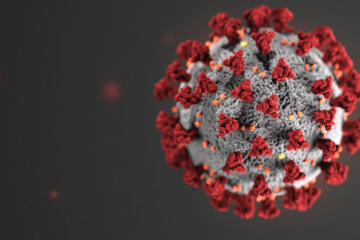VICI VENOUS STENT: FDA OKs VICI Venous Stent to treat Iliofemoral obstructive disease
The U.S Food and Drug Administration has approved Boston Scientific’s VICI Venous Stent System for the treatment of iliofemoral venous obstructive disease, which occurs when the flow of blood through the veins located deep in the pelvic region becomes blocked by a blood clot or compressed by anatomical anomalies.
Venous obstructive disease affects nearly 40 percent of the population in the United States and can be caused by conditions such as deep vein thrombosis, post-thrombotic syndrome and compressive diseases such as May-Thurner syndrome.
In patients with venous obstructions, blood may pool in the legs, resulting in pain, swelling and skin ulcers.
Endovascular treatment for venous obstructive disease is focused on restoring the normal flow of blood from the legs back to the heart. The iliofemoral veins are located deep in the pelvis and may be subject to significant crushing forces from other anatomical structures such as the right common iliac artery, according to Mahmood Razavi, MD, St. Joseph Hospital in Orange, California.
The VICI Venous Stent System was designed to meet the challenges of the venous anatomy. The venous and arterial systems are fundamentally different in structure and stenting requirements. The significant compressive forces encountered in chronic venous disease such as May Thurner and post thrombotic syndrome can override and even crush stents increasing resistance and decreasing flow.
A circular lumen has a greater area which results in optimal flow. A compressed lumen results in greater pressure, turbulence and reduced flow. Clinical evidence shows that more than half compressed stents fail while optimal stents that retain a circular flow are most likely to show clinical improvement.

The VICI is a self-expanding nitrol stent engineered to withstand the harsh conditions of the venous system. The VICI Venous Stent System is designed to maintain a circular lumen and provide effective flow restoration.
“The VICI closed cell geometry offers high compressive resistance for a uniform lumen and excellent inflow and outflow. The VICI stent architecture and strut thickness are attuned specifically for the venous system providing unprecedented strength for nearly three times the compression resistance of alternative stents.”
The VICI Venous Stent System delivers an open lumen that restores flow with lasting patency providing critical and quality of life improvements. “For those suffering from venous obstructive disease, their quality of life may suffer without treatment options optimized for the disease,” Dr. Razavi said.
“With the approval of the VICI stent, clinicians now have access to a stent that was purposely developed and engineered to resist the vessel compression and anatomical tortuosity commonly found within the iliofemoral venous system, enabling our ability to deliver best outcomes for our patients.”
Jeff Mirviss, senior vice president and president of Peripheral Interventions at Boston Scientific, said the approval of the VICI stent was based on data from the VIRTUS study, a prospective, multi-center, single-arm study with 170 patients.
The VIRTUS study evaluated the VICI stent in relation to pre-defined objective performance goals in patients with a clinically significant obstruction in the iliofemoral venous outflow tract. It successfully met its primary safety and effectiveness endpoints.
“The FDA approval of the VICI venous stent system is the latest example of our commitment to building the most comprehensive portfolio of technologies specifically developed to meet the needs of physicians treating both chronic and acute venous disease,” Mirviss said.
The VICI Venous Stent System has been used in Europe for five years, having received the CE Mark in 2013. The device was developed by VENITI Inc., which Boston Scientific acquired in August of 2018. VTN




